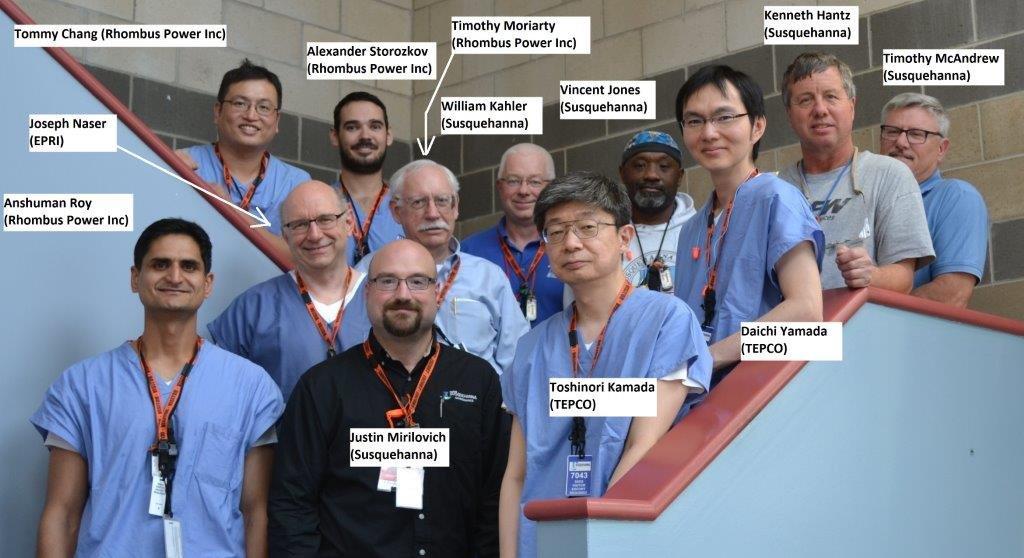Representatives from EPRI, their contractor Rhombus, Tokyo Electric Power Corporation (TEPCO), and USA Member Station Susquehanna Nuclear tested an experimental neutron detection system at Susquehanna Station. The tests support post-accident clean up and decommissioning activities at the three damaged Fukushima Daiichi units in Japan.
The new detector technology is intended to rapidly detect neutron radiation in the presence of extremely high gamma radiation background fields.
Accurate and rapid neutron detection in the presence of extremely high gamma background is required during the decommissioning at the Fukushima site for several safety reasons including:
- Monitoring for re-criticality in Containment and the Reactor Pressure Vessel (RPV) during fuel debris removal and in the water circulation system filters that go from Containment to the RPV
- Detection of fuel in the Suppression Pool
- Detection of fuel in the Drywell to aid in mapping the locations of fuel debris (ie., under the RPV, within the pedestal or outside the pedestal
“The project performed a series of tests in the Spent Fuel Pool to evaluate the new detector’s capability to measure a range of neutron flux at gamma background levels above 100,000 Rem/hr,” said Susquehanna’s Fuel Performance Engineer Bill Kahler, who assisted with the field tests. “The radiation fields were generated by raising and lowering a spent fuel assembly discharged during U1-19RIO in the fuel prep machine while the detector was located at varying distances from the assembly. The detector was effective in measuring neutrons in gamma fields in excess of 380,000 Rem/hr.”
Team Susquehanna received support from Operations, Maintenance, Radiation Protection and Effluents were instrumental in the successful completion of the developmental testing. Efforts by Talen Energy’s Susquehanna Station were greatly appreciated by TEPCO and the EPRI/Rhombus developmental team.


